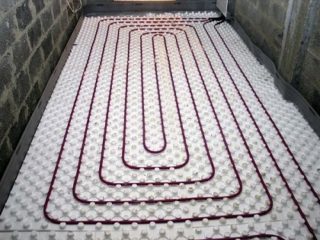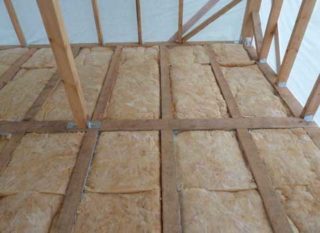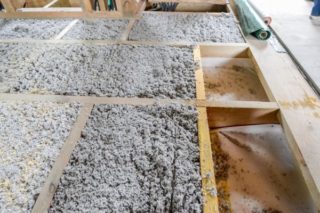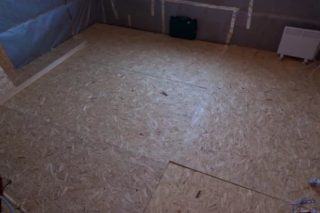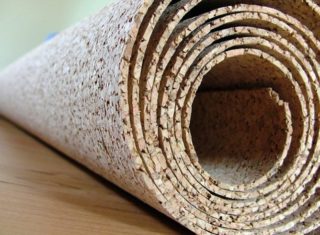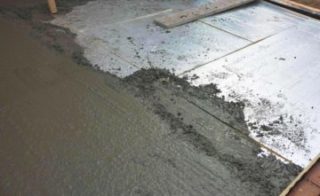To warm the floors in apartment buildings and country houses, it is important to follow certain technologies, otherwise the desired effect will not be achieved. Installation work can be carried out independently, having previously prepared all the working equipment, or invite specialists.
Reasons for floor insulation
To choose the right insulation for a warm water or electric floor in a private house or apartment, you need to deal with the main causes of heat loss:
- poor thermal insulation of the foundation;
- lack of proper tightness in the cavity under the floors;
- the presence of gaps in the overlap.
The consequences are the same - moisture accumulation, entailing deformation of the floor covering. Resistance to deformation of linoleum and carpet is noted, but they blacken.
Over time, if you stay inactive, the walls begin to get wet due to the cold floor, spots of black mold appear on them. This is especially fatal for wooden houses.
Types of thermal insulation for underfloor heating and methods of insulation
Thermal insulation for underfloor heating - these are products and building materials, a characteristic feature of which is low thermal conductivity. Use thermal insulation materials for the following purposes:
- heat protection;
- for technical isolation;
- thermal protection of buildings.
Insulation for a warm floor can be different, the range in construction stores is incredibly diverse.
Mineral wool
Mineral wool is a fibrous insulation made from mineral raw materials. It is characterized by high porosity, about 95% of the volume is occupied by air voids. This provides excellent thermal insulation properties.
The material occupies one of the leading positions due to ease of use and reasonable cost. Also, the advantages of mineral wool include:
- long operational period;
- stability of chemical and physical characteristics;
- does not burn;
- excellent indicators of frost resistance;
- dampens the noise.
Do not forget about the disadvantages:
- inferior in strength to other heat-insulating materials;
- during installation, it is necessary to additionally lay waterproofing and vapor barrier films;
- with regular ingress of moisture, the thermal insulation properties decrease.
The material has an inorganic origin.
Cellulose wool
This material is a wood fiber raw material, the structure is fine-grained. The composition of the substance includes about 80% of wood fiber, 12% of boric acid (flame retardant) and 7% of antiseptic (borax).
In construction, a dry and wet method of laying cellulose wool is distinguished. When implementing the wet method, wet cotton wool is blown out, which requires the use of special construction equipment. The fibers of cotton wool contain pectin, which, under the influence of moisture, exhibits adhesive properties.
When implementing the dry method, you can stack the raw materials manually or use special equipment. For installation, it is enough to fill the insulation into the cavity and ram it to the required density.
The main advantages of cellulose wool:
- low cost;
- there is no need to organize vapor barrier - the material absorbs moisture, and then gives up, while the insulating properties do not deteriorate;
- the solidity of the insulating material, and as a result - the absence of "cold bridges";
- the raw materials are laid by spraying, this allows you to insulate uneven surfaces, gaps and recesses;
- The material is completely safe during installation and production.
Disadvantages of cellulose wool:
- low compressive strength;
- Compared with mineral wool, more laborious installation.
The material is combustible, as it is mainly made of wood.
Particle Board and Fiberboard
In the manufacture of chipboard and fiberboard, wood waste is predominantly used, which is additionally impregnated with synthetic oils and resins, and then subjected to heat treatment.
Fiberboard is divided into the following varieties: soft, insulation-finishing, superhard, semi-solid and hard.
A soft look is often used as a heat-insulating lining material for parquet, for facing floors, walls and ceilings.
The most significant advantages of fiberboards should include budget cost. Their use significantly speeds up the work. Of the shortcomings - protection from insects and rodents is necessary, the material is afraid of moisture.
Cork insulation
Thermal insulation material is made from cork oak bark. The material is environmentally friendly, strong in bending and compression, lightweight, resistant to decay and shrinkage. An additional bonus is that the raw material is easy to cut and it is extremely convenient to work with it. The operating life is more than 50 years, the material is inert.
They make several varieties of cork thermal insulation, it is black and agglomerate. The first material is pure, suberin is added to the agglomerate.
White agglomerate is produced from pre-crushed cork bark, which is pressed under the influence of high temperatures. The adhesive is gelatin, resin or organic glue.
Cork raw materials can only smolder, do not burn. It is important that during smoldering, the material does not emit toxic substances into the atmosphere.
For floor insulation, mainly 25-50 mm thick boards are used.
Styrofoam
Polymer thermal insulation refers to a number of materials. Styrofoam can be flexible, semi-rigid and rigid. Raw materials are divided into expanded polystyrene chlorides (PVC) and expanded polystyrene (PS).
Thermoplastic materials that after one heating cycle are not able to become softer:
- organosilicon and epoxy resins;
- materials based on phenol-formaldehyde substances;
- polyurethane foams.
Polystyrene foams are made by two methods - non-press and press. Visually, they are no different from each other. The structure of the raw material is a large number of small balls bonded to each other. Press manufacturing method is more common today.
The main advantages of the material:
- the boundaries of the operating temperature are practically absent;
- lasting;
- convenient in work;
- has excellent thermal insulation performance;
- reasonable cost;
- low water absorption.
Disadvantages:
- not "breathing";
- under the influence of the sun, the material is destroyed;
- combustible.
The manufacturer stated that the material does not absorb moisture, but in fact this is not entirely true. Polyfoam absorbs moisture, but in very small quantities. At low temperatures, water freezes, destroying the structure of the raw material.
There are a large number of different materials that are actively used for floor insulation. Experts also recommend paying attention to foamed rubber and polyethylene, extruded polystyrene foam and polyurethane foam.
